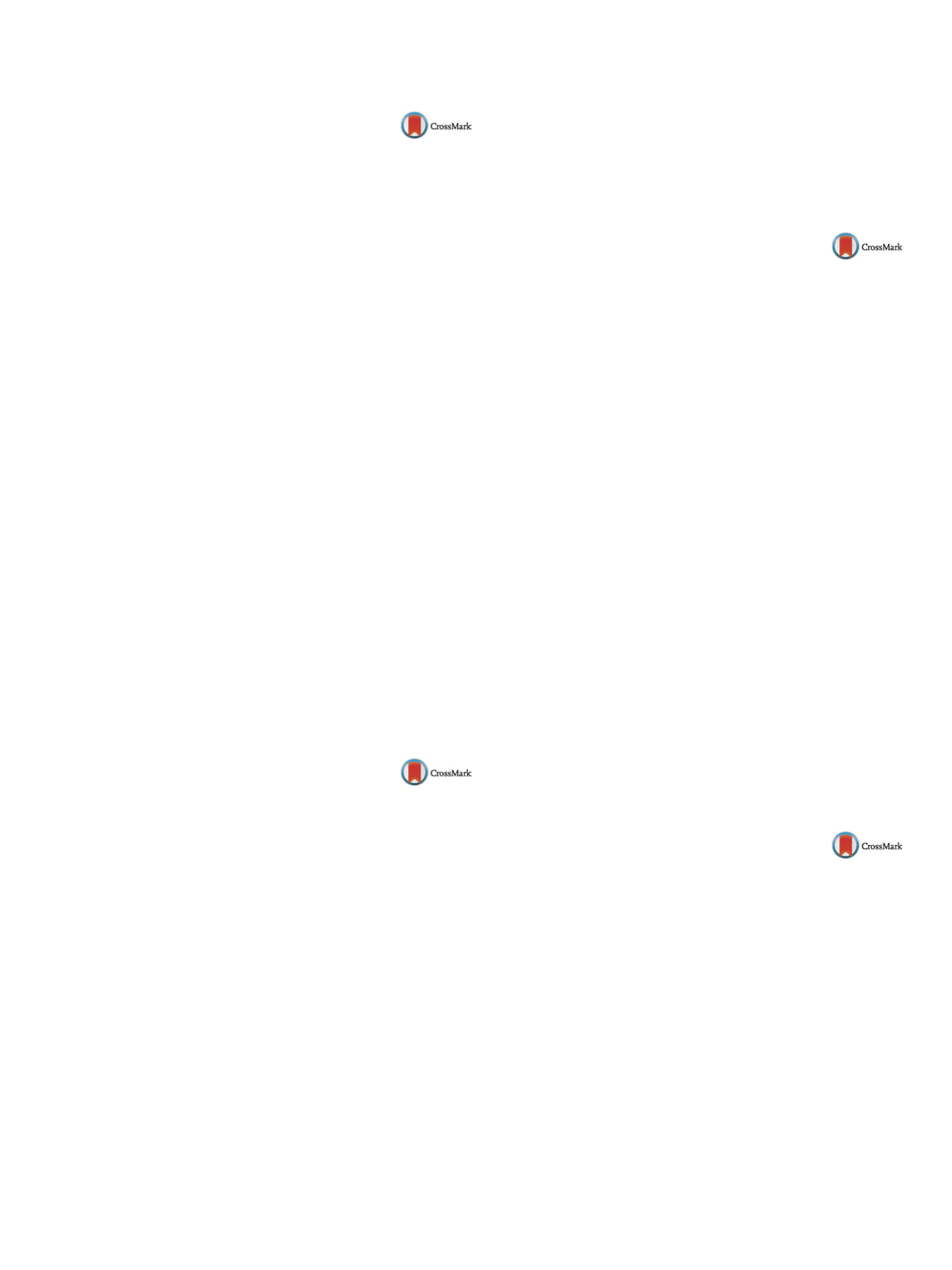

25th European Congress of Psychiatry / European Psychiatry 41S (2017) S405–S464
S457
EV0166
Self-mutilations – an addictive
behavior?
R. Velasco Rodrigues
∗
, J. Mesquita Reis , L. Queiroga
Hospital Dona Estefânia, Child and Adolescent Psychiatry, Lisbon,
Portugal
∗
Corresponding author.
Introduction
Self-mutilations are defined as an intentional
behaviour that involves direct aggression to the person’s body,
without aware suicide intention. The Diagnostic and Statistical
Manual of Mental Disorders IV (DSM-IV) included self-mutilation
as part of the diagnostic criteria for the other specified disruptive,
impulse-control, and conduct disorder or borderline personality
disorder. Later, the DSM-5 suggests that this behavior consti-
tutes a separate diagnostic entity. Despite the growing concern
regarding the increased incidence of self-mutilation among ado-
lescents, there is still no consensus on the pathogenesis of this
behavior. Recent studies have suggested that, in some cases, non-
suicidal self-injurious behavior may be understood as an addictive
behavior. Based on this hypothesis, several researchers have con-
ducted genetic, neurobiological and clinical studies, to verify the
existence of common pathways between these two nosological
entities.
Objectives
The aim of this study is to conduct a literature review
of studies that propose an additive model for self-injurious behav-
ior, discussing its implications in the diagnostic and therapeutic
interventions.
Methodology
Articles indexed in the Pubmed database were ana-
lyzed as well as book and studies published in scientific journals.
Conclusion
A better understanding of the pathogenesis of
self-mutilation is crucial to our diagnostic and therapeutic inter-
ventions. Unfortunately, studies done on this topic in the past were
inconclusive. Further clarification, through new studies, is needed
in order for us to help adolescents with this behavior in a more
effective way.
Disclosure of interest
The authors have not supplied their decla-
ration of competing interest.
http://dx.doi.org/10.1016/j.eurpsy.2017.01.495EV0167
Face processing in autism spectrum
disorder
E. Zaky
Faculty of Medicine, Ain Shams University, Pediatrics, Cairo, Egypt
Background
Autism spectrum disorder (ASD) is a lifelong neu-
rodevelopmental disorder that is characterized by impaired social
and communicative abilities aswell as restricted, repetitive, stereo-
typed pattern of behaviors, interests, and activities. Significant
difficulties in social interactions in autistics are manifested by
impairment in eye-to-eye contact, social reciprocity, and response
to emotional cues.
Objective
Highlighting the neurological basis of normal face
processing and its abnormalities in ASD with percussions on the
management plan of autistic children.
Summary
Human face processing that was proved to be compro-
mised in autistic individuals is pivotal for proper social interactions.
Such simple spontaneous perceptual task in normal children is
carried out by face processing areas of the brain; fusiform gyrus,
superior temporal sulcus, and amygdala. Behavioral, electrophysio-
logical, and neuroimaging studies showed evidences of dysfunction
of such areas in autistics who often focus on face periphery and can-
not interpret that it tells something about a person’s state of mind.
Very early targeted intervention can stimulate face processing
areas of the brain during the early developmental phases of social
brain circuitry which in turn will help autistics to pay attention to
faces and learn to understand emotional expressions.
Conclusion
Eventually, prevention or at least significant amelio-
ration of severity and symptomatology spectrum of autism might
be possible.
Disclosure of interest
The author has not supplied his declaration
of competing interest.
http://dx.doi.org/10.1016/j.eurpsy.2017.01.496EV0168
Depression episode in a patient with
ataxic syndrome (case report)
B. Zenelaj , T. Jupe
∗
, V. Alikaj , B. Allkoja , V. Kodra
University Hospital Centre “Mother Theresa”, Psychiatry, Tirana,
Albania
∗
Corresponding author.
Introduction
The etiologic diagnosis of ataxic syndrome is a chal-
lenge itself, requiring a complete history, physical examination, and
sometimes neuroimaging, as well as extensive laboratory evalua-
tion but despite that in many cases, the etiology remains uncertain.
But in this case report, we are focused on a complication due to this
syndrome, depression episode in a patient suffering from an yet
unknown etiology of ataxic syndrome.
Case presentation
An 18.5 years old Albanian female visits for the
first time the child and adolescent psychiatry clinic suffering from
insomnia for at least 3 months, had difficulties in taking care of her
personal hygiene, did not communicate to anyone, loss of appetite,
spent 2–3 hours crying without reason and depressive humor. She
also manifested tremor and gait abnormalities, which according
to her medical history a year ago, in Italy she was diagnosed with
ataxic syndrome, but the etiology is not yet specified. BECK Depres-
sion Inventory at the first presentation scored 47 points. The girl
was hospitalized and treated in our clinic.
Conclusion
Patient suffering from ataxic syndrome have many
neurologic complication with the passing of the years, but there
has been little information or focus on the psychiatric ones and
in the literature is described a syndrome called cerebellar cogni-
tive affective syndrome with similar symptoms. In this case, we
describe a patient with life-threatening situation due to her men-
tal health condition and by treating the depression we noticed that
the neurologic symptoms improved as well.
Disclosure of interest
The authors have not supplied their decla-
ration of competing interest.
http://dx.doi.org/10.1016/j.eurpsy.2017.01.497EV0169
Comparison of cognitive functions
children with the autism spectrum
disorders and schizophrenia
N. Zvereva
1 ,∗
, N. Simashkova
2, A. Koval-Zaitsev
21
Mental Health Research Center of RAMS, Clinical Psychology,
Moscow, Russia
2
Mental Health Research Center of RAMS, Child Psychiatry, Moscow,
Russia
∗
Corresponding author.
Introduction
Autism spectrum disorder and early onset
schizophrenia have many similar symptoms, however, these
are different disorders. It is important to identify the main
similarities
\
differences in the structure of cognitive impairment
to define further assistance these children correctly. We distin-
guished two options for cognitive defect (total and partial) in
children with schizophrenia.
Aims
Comparison of cognitive functions at children with autism
spectrum disorder and early onset schizophrenia.
Objectives
Two groupswith autismspectrumdisorder (ASD1 – 22
patients of MHRC mean age 8.9; ASD2 – 27 pupils of special
school mean age 7,4). Two groups with early onset schizophrenia


















